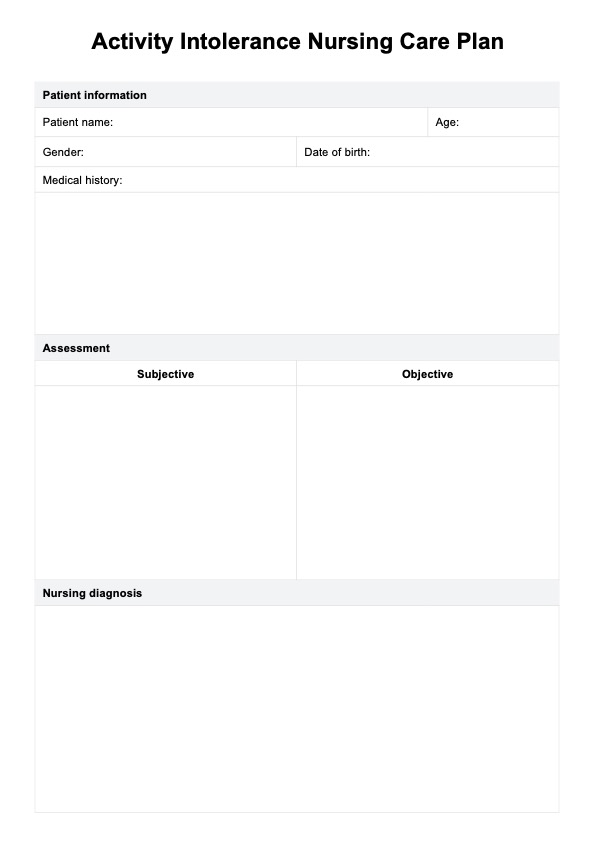A nursing diagnosis for activity and exercise related to activity intolerance is often defined as "Activity intolerance related to imbalance between oxygen supply and demand secondary to decreased cardiac output." This nursing diagnosis created out of NANDA-approved diagnoses highlights an individual's insufficient energy to perform daily activities due to physiological limitations.

Activity Intolerance Nursing Care Plan
Use our Activity Intolerance Nursing Care Plan template in forming a plan to promote activity tolerance.
Activity Intolerance Nursing Care Plan Template
Commonly asked questions
Promoting activity tolerance involves gradually increasing physical activity through controlled exercises, monitoring vital signs, and teaching energy conservation techniques. This approach helps patients build stamina while ensuring that they don't overexert themselves, allowing for safe and steady improvement.
Nursing interventions for activity intolerance include assessing the patient’s tolerance to physical activities, monitoring vital signs like heart rate and blood pressure before and after activities, encouraging rest periods between tasks, and teaching energy conservation techniques. Additionally, nurses should assess nutritional status and functional status to ensure adequate energy levels for activity.
EHR and practice management software
Get started for free
*No credit card required
Free
$0/usd
Unlimited clients
Telehealth
1GB of storage
Client portal text
Automated billing and online payments











